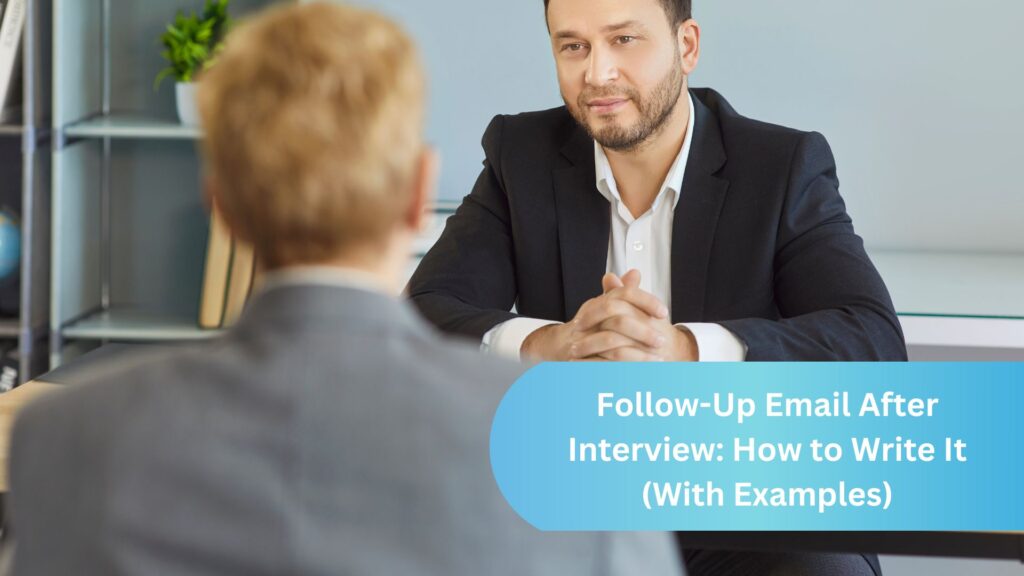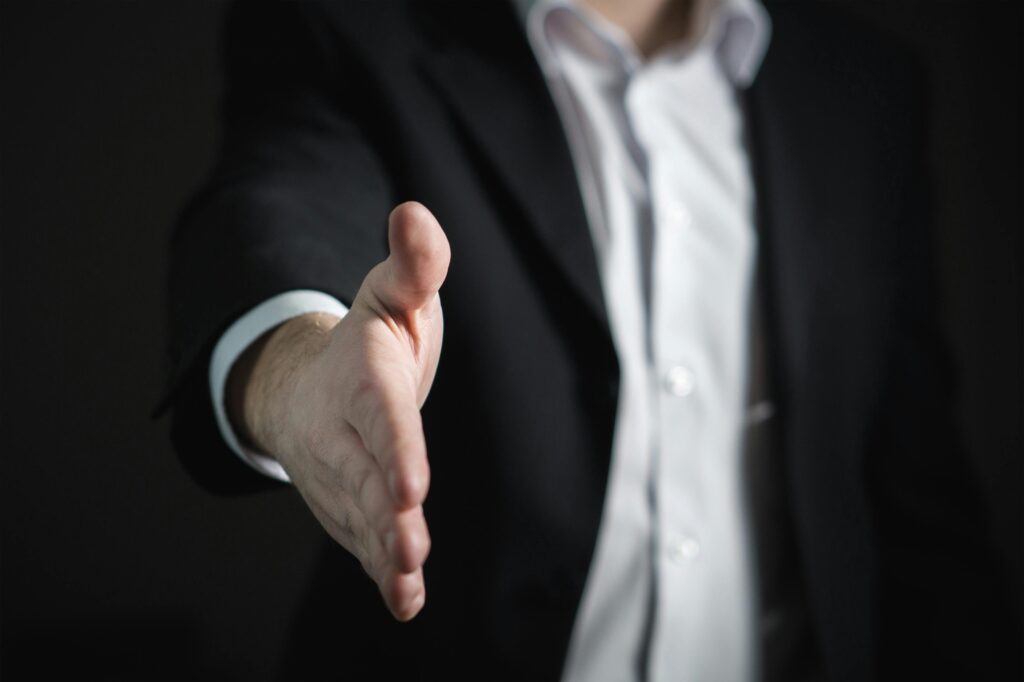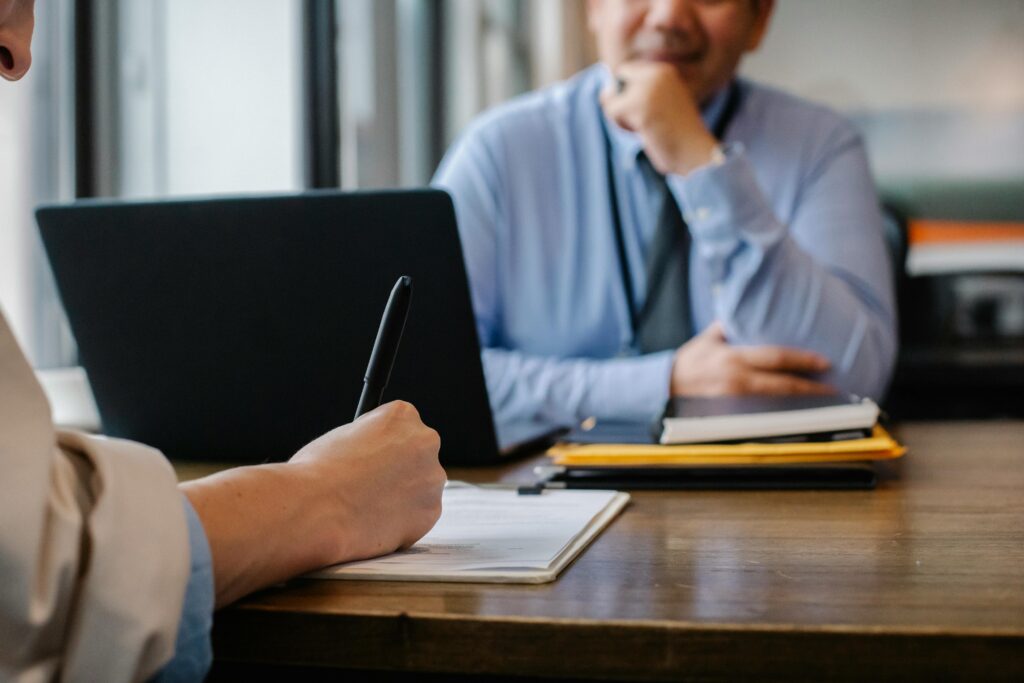You just finished an interview — and now the waiting begins. Whether you’re feeling nervous or impatient, sending a follow-up email after your interview can make a real difference in how you’re remembered.
It’s one of the simplest yet most effective ways to stand out, show professionalism, and reaffirm your interest in the role.
Why does Following Up Matter?
Many job seekers hesitate to follow up because they don’t want to seem pushy. But a well-crafted follow-up email is a sign of professionalism and enthusiasm — not desperation. It helps you:
✅ Reiterate your interest in the job
✅ Thank the interviewer for their time
✅ Remind them of your qualifications
✅ Keep your name fresh in their mind
In competitive job markets, candidates who send thoughtful follow-ups are more likely to get a response or move forward in the hiring process.
When to Send a Follow-Up Email
Timing is everything when it comes to sending a follow-up email after an interview. Send it too early, and it may seem rushed or impatient. Wait too long, and you risk being forgotten.
The ideal window is within 24 to 48 hours after your interview. This timeframe shows that you’re proactive, attentive, and genuinely interested in the position — while also giving the interviewer a little space to process your conversation and meet with other candidates.
Here’s a quick breakdown:
-
Same-day follow-ups: Usually too soon unless you had a brief phone or virtual screening and want to send a short thank-you.
-
Within 24 hours: Perfect for showing enthusiasm and professionalism after a one-on-one or panel interview.
-
Within 48 hours: Still timely, especially if the interview took place late in the week.
-
After the stated timeline: If the interviewer said, “We’ll get back to you by next week,” wait a few days beyond that before following up. This shows patience and respect for their process.
💡 Pro Tip: If you interviewed on a Friday, send your follow-up Monday morning. It helps your message appear at the top of their inbox when the week begins.
If you’ve gone more than 10–14 days without hearing back, it’s appropriate to send a second follow-up — a short, polite note checking on the hiring timeline and reaffirming your continued interest.
How to Write a Professional Follow-Up Email After an Interview
Crafting the right follow-up email isn’t just about saying “thank you” — it’s your chance to reconnect, reinforce your fit, and stay top of mind as hiring decisions are made. The best follow-ups are warm, confident, and personalized to show genuine interest in the role.
Here’s a step-by-step guide to help you write a message that makes a strong impression:
1. Subject Line
Keep it short, specific, and professional. The goal is to make your email instantly recognizable and easy to find.
✅ Examples:
-
“Thank You for the Interview – [Your Name]”
-
“Following Up on [Job Title] Interview”
-
“Appreciated Our Conversation – [Your Name]”
📌 Tip: Avoid generic or vague subjects like “Checking in” or “Hello.” Clear subject lines show respect for the recruiter’s time.
2. Greeting
Always address your interviewer by name and title, if known. A personalized greeting feels more genuine than a generic “Hi.”
✅ Example:
“Dear Ms. Johnson,”
If you interviewed with multiple people, it’s okay to send separate, tailored follow-ups to each person, or a group email if the conversation was collaborative.
3. Express Gratitude
Start by thanking them for their time and consideration. A little appreciation goes a long way toward showing professionalism and emotional intelligence.
✅ Example:
“Thank you for taking the time to meet with me on Tuesday to discuss the Marketing Assistant position. I really enjoyed learning more about your team and company goals.”
📌 Tip: Mention the specific date or details from the interview — it personalizes the note and helps jog the interviewer’s memory.
4. Reiterate Your Interest
Remind them why you’re excited about the position and what stood out to you in the interview. This shows enthusiasm and reinforces your cultural fit.
✅ Example:
“I was especially inspired by your company’s commitment to innovative digital campaigns, and I’m eager to contribute my creativity and content strategy experience to your growing team.”
📌 Pro Tip: Tie your interest to something unique you discussed — a project, goal, or value the company emphasized.
5. Highlight a Key Strength or Value You Bring
Without rehashing your entire resume, mention one relevant strength, accomplishment, or experience that directly aligns with the role.
✅ Example:
“With my background in social media marketing, I’m confident I can help boost engagement and brand visibility — just as I did when I increased campaign reach by 40% at my previous job.”
This subtly reminds them of your capabilities and impact.
6. Close Politely and Professionally
End on a confident but courteous note. Express gratitude again and indicate your anticipation for their response.
✅ Example:
“Thank you again for the opportunity to interview. I look forward to the possibility of contributing to your team and hope to hear from you soon.”
📌 Tip: Keep the closing friendly but formal. Avoid phrases like “Hope to hear back ASAP” or “Please respond soon,” which can sound pushy.
7. Signature
Include your full name, phone number, and LinkedIn profile (if applicable). This makes it easy for the hiring manager to reach you or check your professional background.
✅ Example:
📧 Example Follow-Up Email Template
Subject: Thank You – [Your Name]
Dear [Interviewer’s Name],
Thank you for meeting with me yesterday to discuss the Customer Support Specialist position. I truly appreciated learning more about your company’s commitment to excellent customer service and collaborative team culture.
I’m very enthusiastic about the opportunity to bring my communication skills and problem-solving experience to your team. Please don’t hesitate to reach out if you need any additional information.
Thank you again for your time and consideration. I look forward to hearing from you soon.
Best regards,
[Your Name]
📞 [Your Phone Number]
🔗 [LinkedIn Profile]
💡 Pro Tip:
If you haven’t heard back after 7–10 business days, it’s completely appropriate to send a short second follow-up email to reaffirm your interest and politely inquire about the hiring timeline.
No Response Yet? Send a Second Follow-Up
If you haven’t heard back after a week or two, it’s okay to send a polite second follow-up. Keep it brief and friendly — simply ask for an update on the hiring process and reaffirm your interest.
Example:
“Hi [Interviewer’s Name], I hope you’re doing well. I just wanted to follow up regarding the [Job Title] position. I’m still very interested and would love to know if there are any updates on the next steps.”
Feeling Discouraged? You’re Not Alone
If you’ve been job hunting for a while, waiting for responses can feel discouraging. But remember — every interview is progress. Following up helps keep the connection alive and demonstrates persistence, professionalism, and confidence — traits employers value highly.
Even if this role doesn’t work out, maintaining good communication can leave the door open for future opportunities with the same company.
How WiseWorq Can Help
Before your next interview, do your research!
WiseWorq offers real employee insights, culture reviews, and hiring information from 26,000+ U.S. companies — helping you apply smarter, prepare better, and follow up with confidence.
👉 Explore verified company reviews at https://www.wiseworq.com
Key Takeaway
A thoughtful follow-up email after an interview isn’t just good manners — it’s a strategic move. It reminds employers who you are, reinforces your interest, and can make you stand out from other candidates.
Stay polite, professional, and persistent — and your next email might just land you the job offer you’ve been waiting for.


